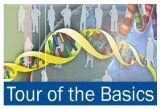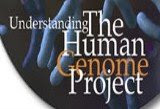 Life Science Space (June 8, 2008)--You may owe the complexity of your 100-trillion-celled body to the ancestors of a primitive microbe called Monisiga brevicollis.
Life Science Space (June 8, 2008)--You may owe the complexity of your 100-trillion-celled body to the ancestors of a primitive microbe called Monisiga brevicollis.Described in two studies published recently in the Proceedings of the National Academy of Sciences, M. brevicollis possesses one of the most the most elaborate sets of cellular signaling genes ever found.
The microbe's communications mechanisms could prove a critical piece in the puzzle of how single-celled organisms -- the only form taken by Earthly life for three billion years -- combined into many-celled creatures.
That jump has confounded scientists and inspired critics of evolution, who insist that mutation and natural selection alone are too incremental to explain such a dramatic transition.
"This provides a plausible explanation," said Bruce Mayer, a University of Connecticut Health Center developmental geneticist who was not involved in either study. "All of a sudden you've got all this new signaling bandwidth. That lets you do much more complex levels of signaling, potentially allowing cells to come together and leading to multicellular organisms."
 M. brevicollis' specialty is tyrosine kinases -- a family of enzymes that function as the "writers" of cell-level signals. Before researchers led by Gerard Manning of the Salk Institue for Biological Studies sequenced the microbe's genome, tyrosine kinases had never before been found in a single-celled organism.
M. brevicollis' specialty is tyrosine kinases -- a family of enzymes that function as the "writers" of cell-level signals. Before researchers led by Gerard Manning of the Salk Institue for Biological Studies sequenced the microbe's genome, tyrosine kinases had never before been found in a single-celled organism.However, the "readers" and "erasers" -- technically known as Src Homology 2 domains and protein tyrosine phosphatases -- have been found in microbes, and are believed to have existed in early residents of the primordial soup.
On their own, theorize University of California, San Francisco cell biologists David Pincus and Wendell Lim, those two elements probably provided microbes with small but unremarkable advantages. But once random mutation added tyrosine kinases to their molecular toolkit, life was dramatically enhanced.
A few limited feedback mechanisms turned into a full-blown communications network. The ability of single cells to sense nearby nutrients suddenly became a potential for collective coordination. Fast-forward a billion years and the oceans teemed with life that would one day spread to land, resulting in the living world we know.
Adding credence to the theory is the structural resemblance of M. brevicollis to collar cells, which aggregate to form sponges -- the most primitive multicellular organisms.
"Through little steps you get everything you need in the same place, in the same cell, and that allows you take this quantum leap into new levels of complexity," said Mayer.
Such leaps have been described by scientists who want the theory of evolution expanded to include the dynamics of complexity. Thusly expanded, mainstream evolution would account for how a few isolated components can combine to produce a wealth of unpredictable possibilities. It would also be immune to the creationist argument that single cells could not combine without divine guidance.
Manning, however, is less concerned with the evolutionary lessons of M. brevicollis than the instructions contained in its 128 tyrosine kinase genes, a full 30 more than are possessed by humans.
"It has a more sophisticated system, at least in terms of components, than humans with our 100 trillion cells," said Manning. "What's important is the different ways we can see signals work. If we can find a new network, than we can better figure out what's fundamental to us."
--------------------------------------------------------------------
Source:
http://blog.wired.com/wiredscience/2008/07/primitive-micro.html#more
See more at:
Evolution of the phospho-tyrosine signaling machinery in premetazoan lineages [PNAS]http://www.pnas.org/content/early/2008/07/02/0803161105.abstract
The protist, Monosiga brevicollis, has a tyrosine kinase signaling network more elaborate and diverse than found in any known metazoan [PNAS] [.pdf proof]
http://kinase.com/monosiga/PNAS_proof.pdf
.jpg)
.jpg)
.jpg)

.jpg)
.jpg)
No comments:
Post a Comment